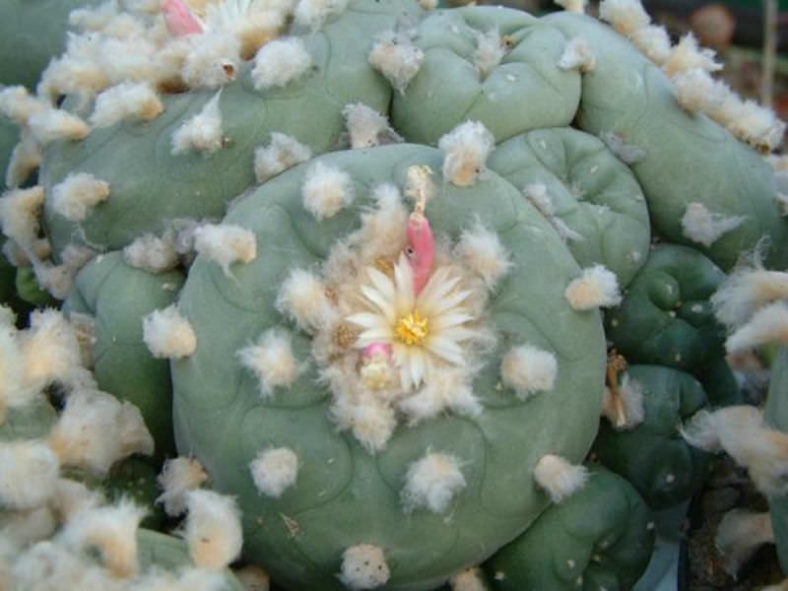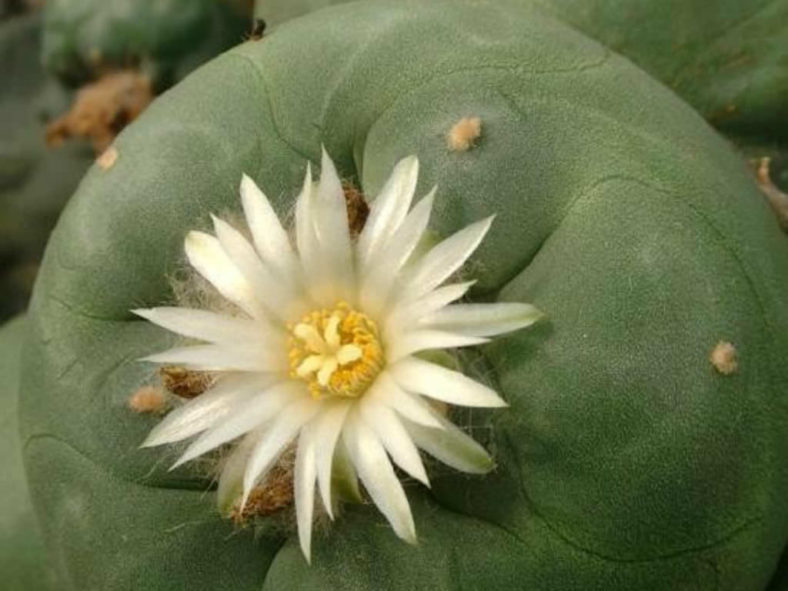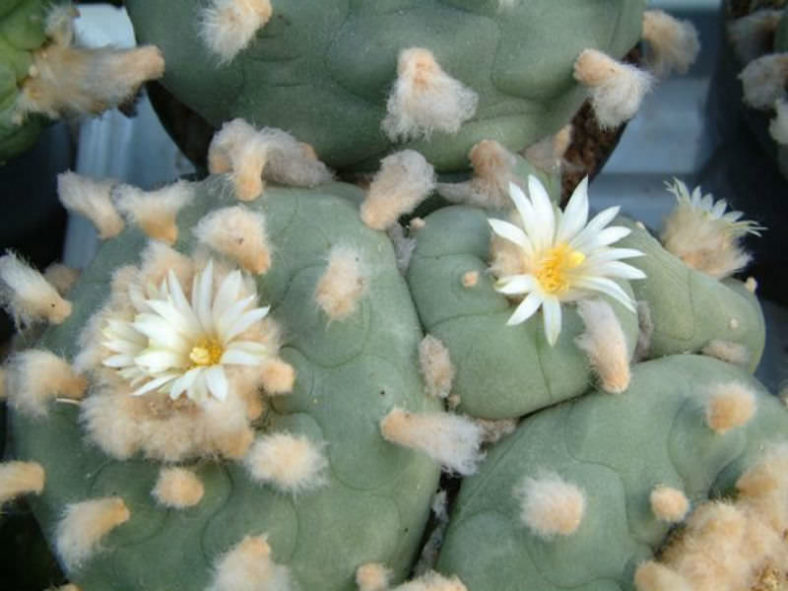Scientific Name
Lophophora diffusa (Croizat) Bravo
Common Name(s)
False Peyote
Synonym(s)
Lophophora echinata var. diffusa, Lophophora williamsii var. diffusa, Lophophora viridescens, Lophophora ziegleri, Lophophora ziegleriana
Scientific Classification
Family: Cactaceae
Subfamily: Cactoideae
Tribe: Cacteae
Genus: Lophophora
Etymology
The specific epithet "diffusa" (pronounced "dy-FEW-sa") means "diffused, spread" and refers to the flat tubercles of this species, which are outspread without the stems having prominent ribs.
Origin
Lophophora diffusa is endemic to Mexico. It occurs only in a small area near Vizarron in Querétaro in semi-deserts on slopes and river beds and under the shade of various shrubs and nurse plants.
Description
Lophophora diffusa is a small cactus with a large taproot and soft, yellowish-green to grey-green, somewhat globular stems that usually lack well-defined ribs and have tufts of hair spread unequally on the prominent podaria. It can grow solitary or form clumps of several stems. The stems can reach a height of 2.8 inches (7 cm) and a diameter of 5 inches (12.5 cm).
The flowers are usually white or faintly pink, sometimes yellowish-white, and appear in summer. They can measure up to 1 inch (2.5 cm) in length and are nearly equal in diameter.

Hardiness
USDA hardiness zones 9b to 11b: from 25°F (-3.9°C) to 50°F (10°C).
How to Grow and Care
Lophophora is more tolerant of soil types than its relatives and typically grows in areas with decomposed limestone present in the soil. In cultivation, Lophophora does best in fast-draining mineral-based soil, which is about 2/3 sand.
Abundant water is beneficial in the summer when temperatures are over 90°F (32°C) and the plants are exposed to full sunlight for maximum growth. The soil must be allowed to dry out completely between waterings.
They should also be fertilized twice a year. Over-fertilizing will typically result in the Lophophora developing cracks and splitting.
Some Lophophoras may develop a corky material on the plant body if exposed to pesticides or insecticidal soap. This corky condition will usually heal similarly to human skin if the plants are exposed to full sunlight.
Lophophoras are free-flowering in cultivation, and although they can withstand low temperatures during winter, they do not require a cold shock to initiate flowering.
Learn more at How to Grow and Care for Lophophora.
Links
- Back to genus Lophophora
- Succupedia: Browse succulents by Scientific Name, Common Name, Genus, Family, USDA Hardiness Zone, Origin, or cacti by Genus
Photo Gallery
Click on a photo to see a larger version.


